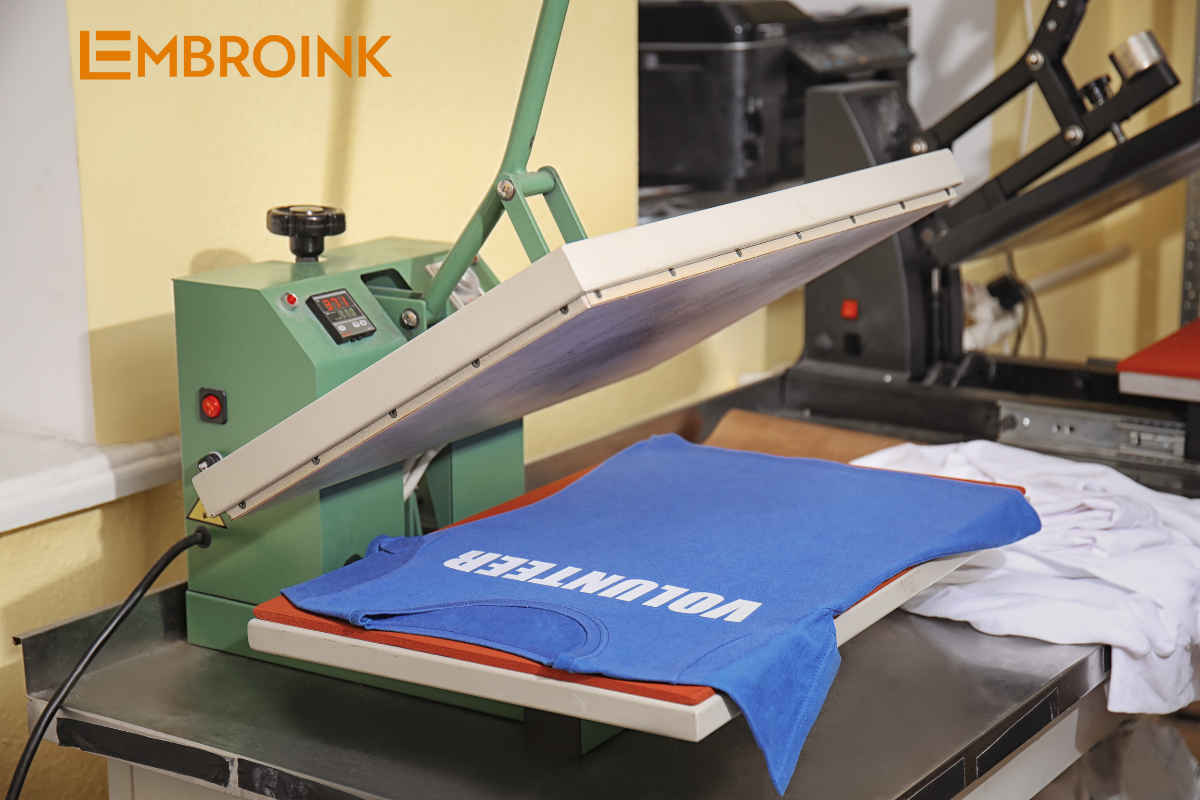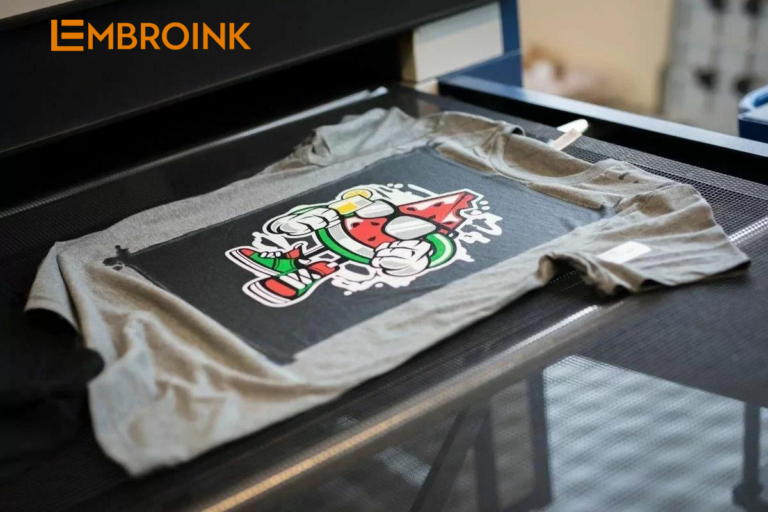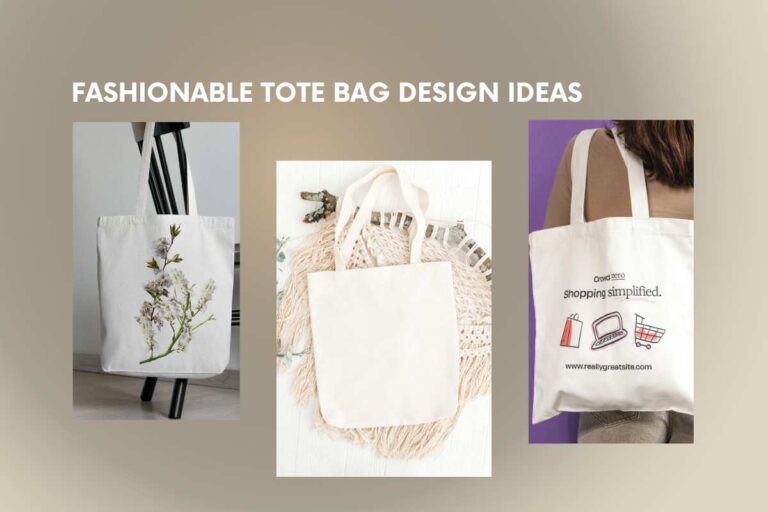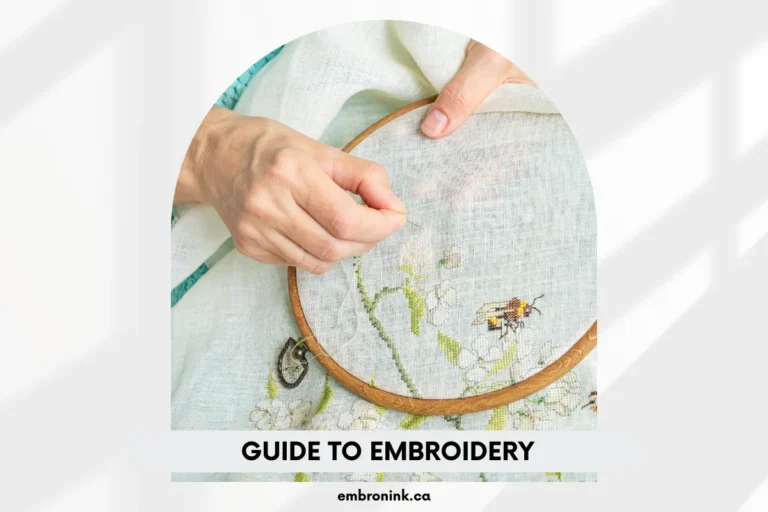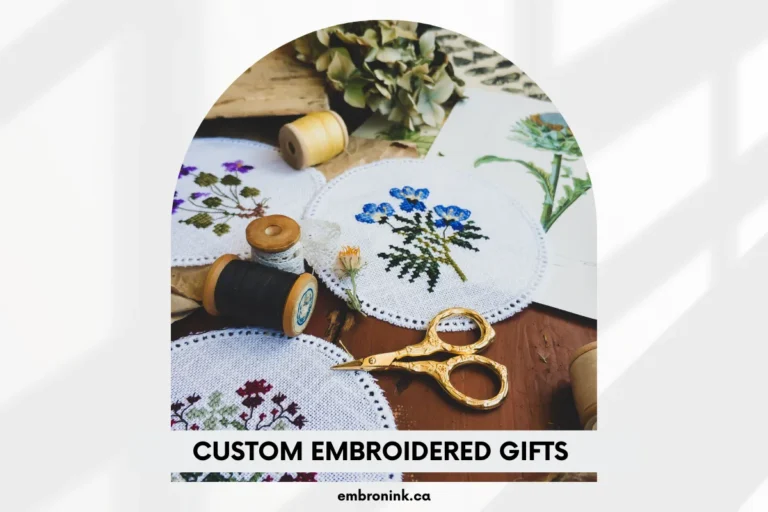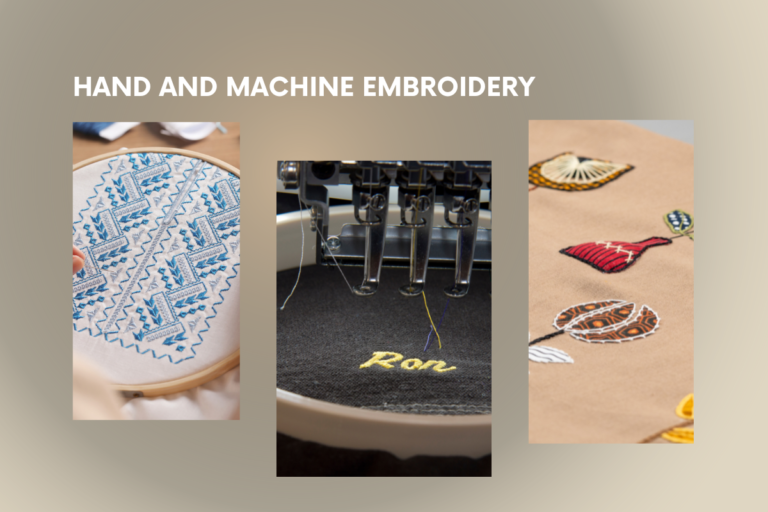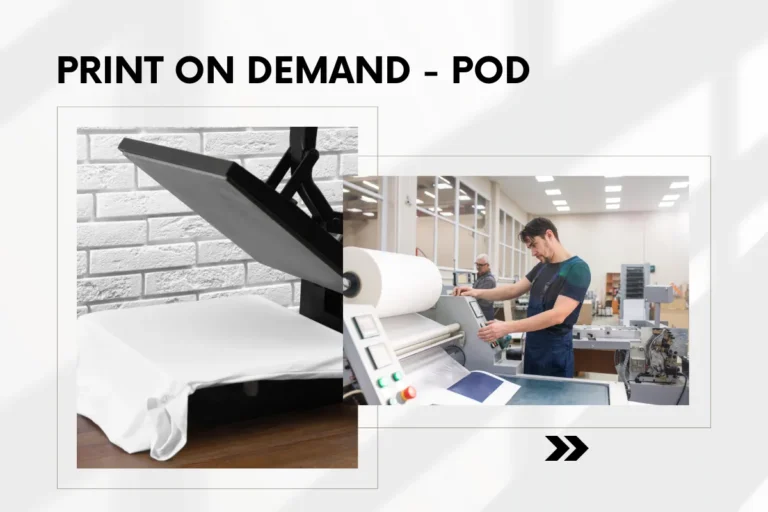DTG vs. Screen Printing: How to choose the best apparel printing method
You’ve likely heard this from someone starting their own t-shirt business—or maybe you’ve even said it yourself.
The excitement of bringing a design idea to life can quickly fade when you start tackling the technical details, with the first big question being: Which apparel printing method should I choose? There are several custom apparel printing options available, but the two most popular are direct-to-garment (DTG) and screen printing. Choosing the right one for your online business can be crucial, leading to satisfied customers, cost savings, and the ability to scale as your business grows.
Given the stakes, it’s essential to explore your options by asking questions like:
- Will my design work with this method?
- How cost-effective is it?
- Is it eco-friendly?
In this article, EmbroInk will dive into the differences between DTG and screen printing, which designs they suit best, and how sustainable each technique is.
Screen Printing
Let’s begin with screen printing, a widely used method for custom apparel. In this section, we’ll address common questions about the screen printing process, including costs, quality, and design considerations.
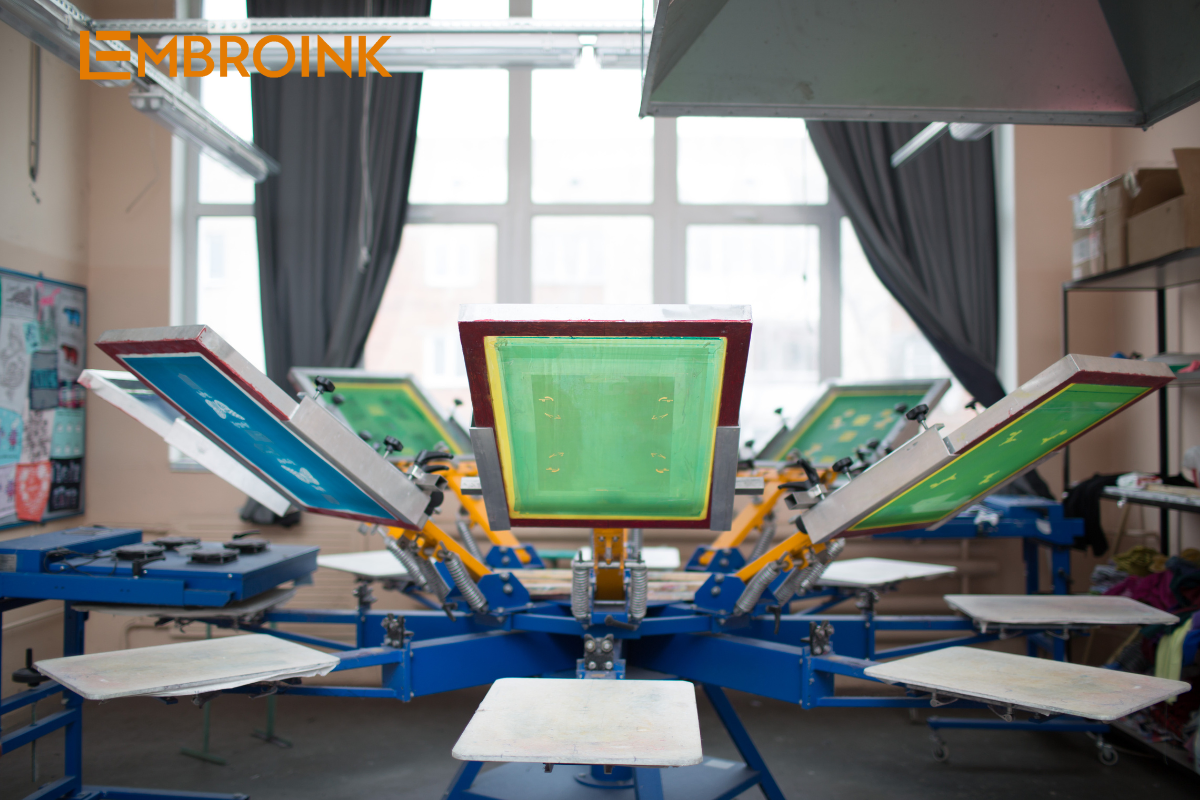
What is Screen Printing?
Screen printing is a technique where ink is pressed through a woven mesh stencil (also known as a screen) onto fabric. Unlike other methods where the ink is absorbed, in screen printing, the ink sits on top of the fabric, creating a distinct texture.
How does Screen Printing work?
Screen printing requires creating a separate screen for each element of your design. Once the screens are prepared, the design is applied to the garment one layer at a time, with each color and element being added separately. The more layers your design has, the longer the process takes, and the thicker the design will feel on the fabric.
Due to the time-consuming setup, screen printing is most cost-effective for bulk orders. Printing just one or two shirts isn’t practical if the stencils took hours to create.
What type of designs work best with Screen Printing?
Screen printing excels with solid graphics that don’t have fine details. Think of basic typography, geometric shapes, symbols, and simple designs. This is because intricate designs require time-consuming stencil preparation, and it’s challenging to maintain detail accuracy during printing.
Additionally, because each color is applied separately, screen printing is best suited for designs with a limited color palette. Many print providers cap the number of colors at around nine.
Is Screen Printing eco-friendly?
As a store owner, it’s important to consider the environmental impact of your business. The sustainability of your chosen printing method is a key factor.
Screen printing is typically used for bulk orders, which can lead to overproduction—a major issue in sustainable fashion. Unsold screen-printed products may end up in landfills or be incinerated, contributing to environmental pollution.
Moreover, screen printing often requires significant water usage and commonly employs plastisol inks, which do not biodegrade, raising further environmental concerns.
Is Screen Printing expensive?
The cost of screen printing depends largely on the quantity of items you order. It tends to be the most economical option when ordering in large quantities. This is because creating the stencils for screen printing is a manual, time-intensive process. However, once the stencils are made, printing many items with the same design allows for bulk discounts. On the other hand, if you only need a small batch or a single item, direct-to-garment (DTG) printing is generally more cost-effective.
Is Screen Printing high quality?
Screen printing is renowned for its high quality. The process produces vivid, rich colors and durable prints that can withstand frequent wear and washing. For the best results, it’s recommended to use screen printing for simple designs that don’t require too many colors or intricate details.
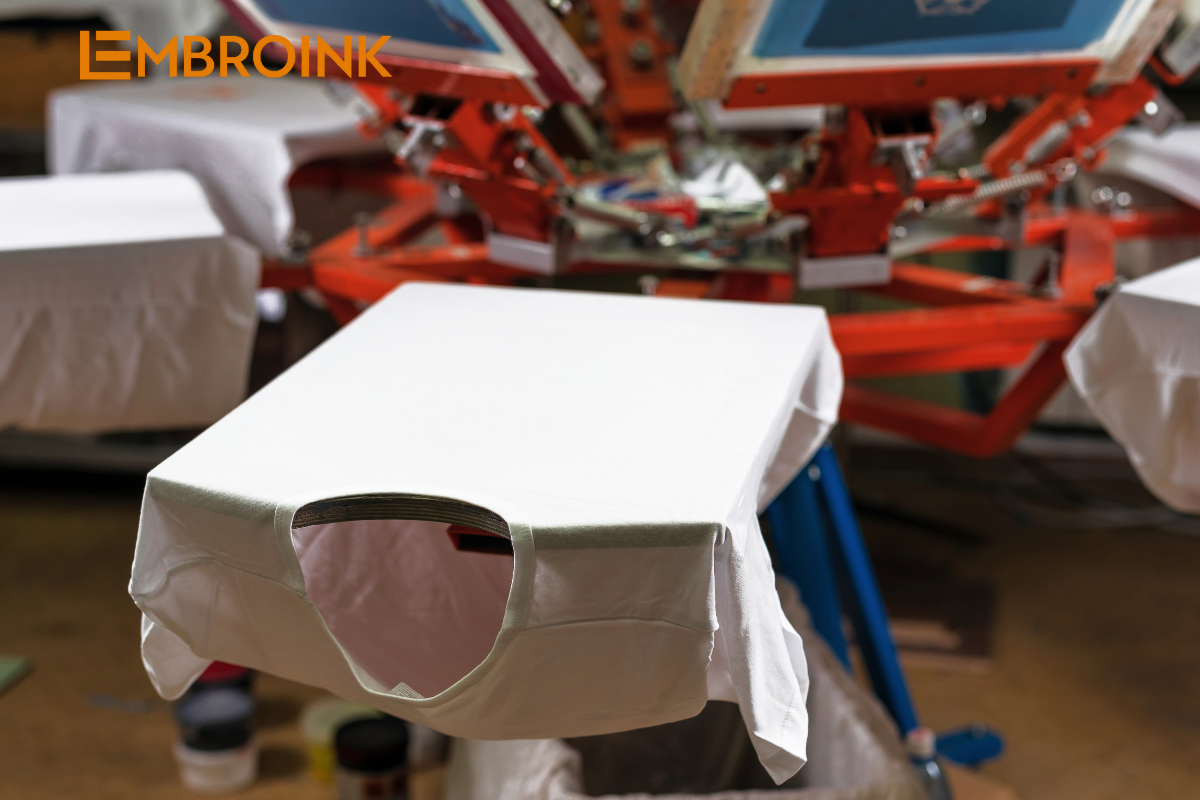
Is Screen Printing durable?
Yes, screen-printed garments are known for their durability, provided they are properly cared for. To maintain the quality of the print and prevent issues like cracking, peeling, or fading, it’s important to avoid washing the garments in hot water, steer clear of bleach, and always turn them inside out before washing.
Is screen printing the right choice for business?
Screen printing can be a cost-effective option if your designs feature simple graphics with only a few colors. However, it does require an upfront investment, as most third-party print services have order minimums ranging from 5 to 100 items.
The final cost of a screen printing order depends on the number of colors in your design and the number of screens needed. This can make screen printing financially challenging if you’re just starting out or if you want to experiment with multiple designs. Additionally, ordering in bulk means you’ll need to find storage space for the printed garments, which can limit the number of designs you offer in your store since each design needs to be printed in bulk.
It’s also important to consider whether you’ll be able to sell all the items you print. Overestimating your needs could lead to unsold inventory, contributing to textile waste—a concern for many environmentally conscious businesses, especially those just starting out without an established customer base.
Lastly, some printing services may require you to submit print files separated into layers for each color, and they may ask for specific color codes for the inks. If you’re looking for a more hands-off experience—where you can simply upload your design and not worry about the technical details—screen printing might not be the best choice for you.
DTG Printing
Now, let’s dive into our second printing method—Direct-to-Garment (DTG) printing. How does it work, and is it the right choice for your business? Read on to find out.
What is DTG Printing?
Direct-to-garment (DTG) printing is a method that sprays ink directly onto the fabric, allowing the ink to soak into the fibers. It’s similar to printing on paper but adapted for textiles.
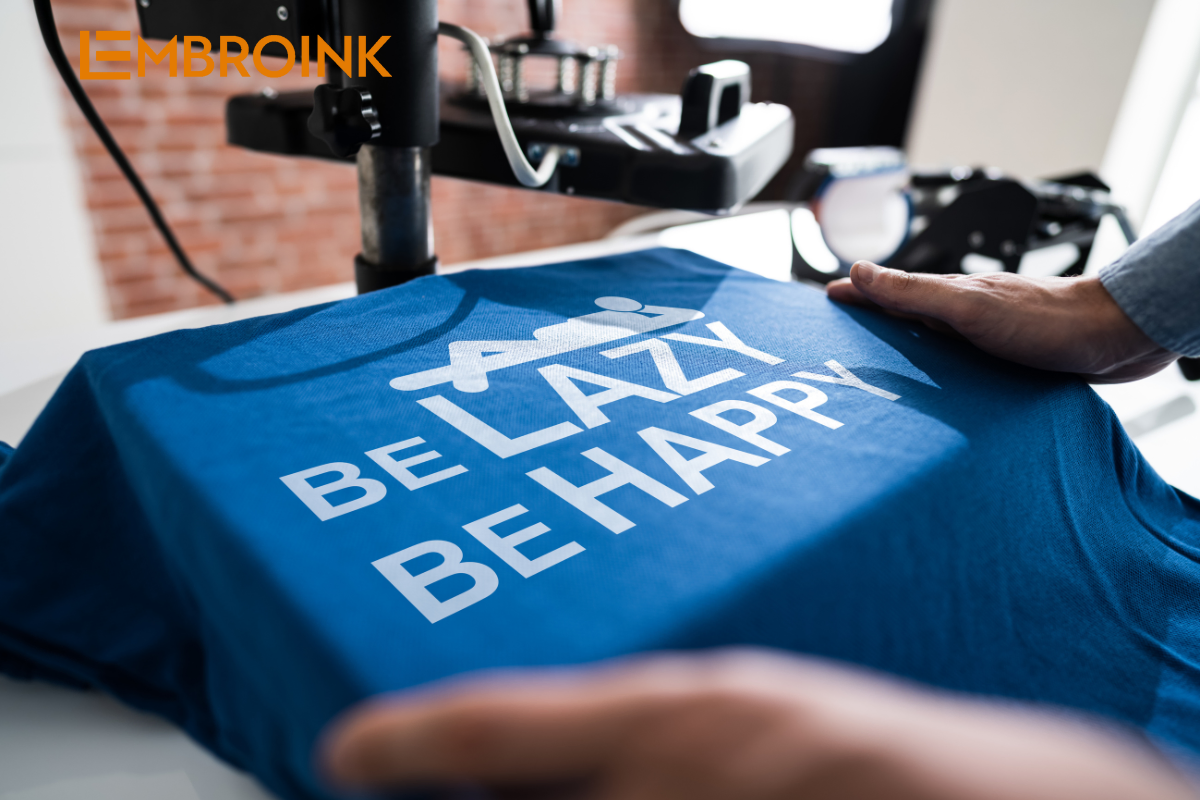
How does DTG Printing work?
DTG printing uses digital printers that spray water-based ink onto the fabric. Before printing, a pre-treatment solution is applied to help the ink bond with the fabric. The garment is then mounted on a platen and placed in the printer, where the design is printed in just a few minutes. Finally, the ink is cured to ensure durability. DTG works best on 100% cotton, though cotton blends are also suitable.
The main advantage of DTG is the minimal setup time, making it easy to print single items. For example, if your online store is connected with a third-party DTG print provider, stomer places an order, the provider receives the order, prints your design on the garment, and ships it directly to the customer under your label.
What Type of Designs Work Best with DTG?
DTG printers offer extensive color options, making them ideal for detailed designs and photorealistic images with few color limitations. This is particularly beneficial for businesses experimenting with various colors and designs.
However, DTG struggles with transparencies. Elements that are less than 100% opaque don’t print well, as the printer may spread the ink unevenly, leaving gaps in the design. It’s best to use solid colors or simulate semi-transparency through halftoning. For optimal results, create graphics using the sRGB color profile, which aligns well with DTG printer capabilities.
Is DTG Printing eco-friendly?
DTG printing supports a more sustainable fashion model than screen printing. Since it allows for printing one-offs, businesses can avoid overproduction and reduce textile waste. Considering that 92 million tons of textile waste are generated annually in the fashion industry, this is a significant advantage.
Additionally, many DTG printers, like those from Kornit, use water-based vegan inks that are non-hazardous, toxin-free, biodegradable, and contain no animal by-products. Kornit formulates, tests, and produces these inks in-house to ensure the highest quality.
To help you highlight the eco-friendly benefits of DTG printing to your customers, we’ve prepared free copy and marketing visuals templates that you can customize and use in your store. You can download them at the end of this article.
How long do DTG prints last?
DTG prints remain crisp and vibrant for a long time if cared for properly. To maintain the print quality, machine-wash garments on a gentle cycle, avoid bleach and fabric softeners, and refrain from ironing the prints.
Is DTG printing the right choice for your business?
Direct-to-garment printing offers a hassle-free way to prepare products for your customers. Most third-party printers have no minimum order requirements for DTG products, so you don’t need to worry about holding inventory. This method also enables on-demand printing, allowing businesses to fulfill orders as soon as they come in.
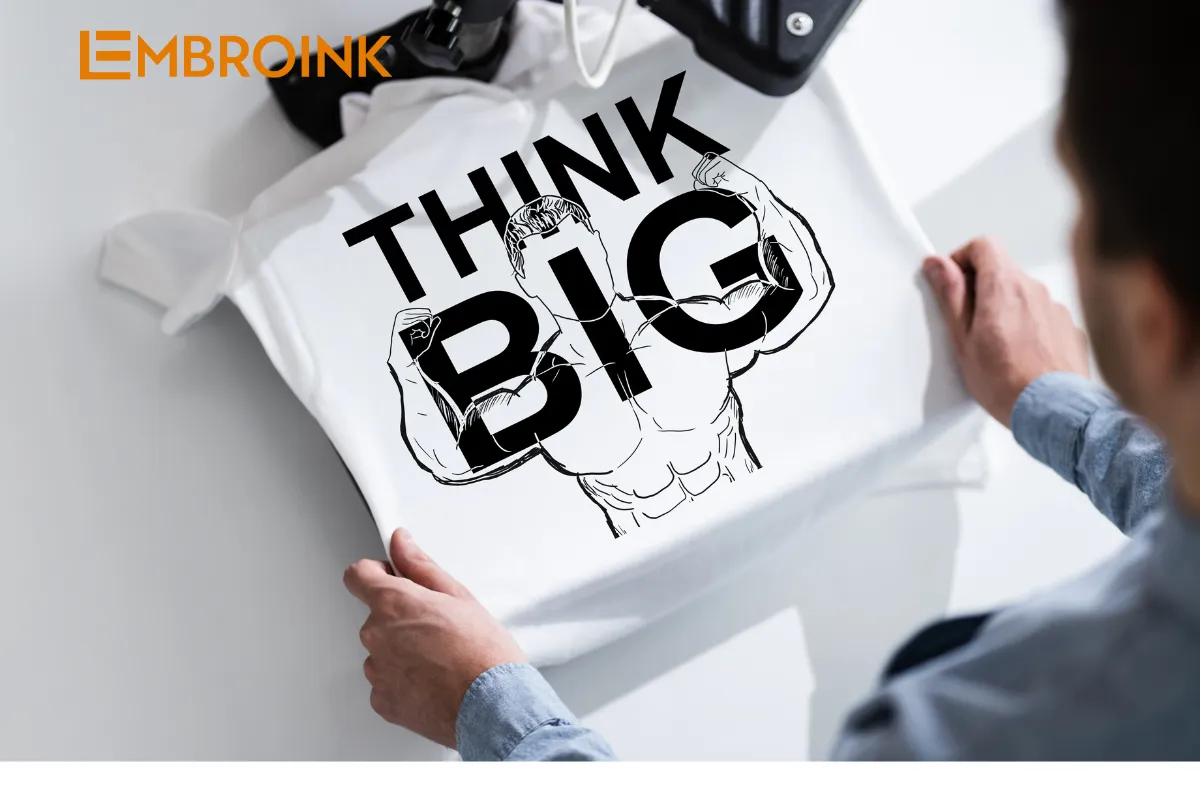
With DTG, the entire design is printed in one pass, and since there’s no color count, there’s no extra setup time. This means your order gets fulfilled as soon as the print file is received.
This printing model gives you the flexibility to introduce new designs or test new markets without financial risk. If a product doesn’t sell, you can easily discontinue or replace it without incurring losses.
DTG vs. Screen Printing: What’s right for you?
Both Direct-to-Garment (DTG) and screen printing offer high-quality prints, but they differ significantly in their methods and costs. DTG uses a printer to spray ink into the fabric, whereas screen printing applies layers of ink on top of the fabric. The key difference lies in their operational models: DTG allows for on-demand order fulfillment with no upfront costs, while screen printing is typically ordered in bulk.
If you’re still uncertain about which printing method suits your needs, take a look at the comparison table below:
| Feature | Screen Printing | DTG |
|---|---|---|
| High-quality prints | Yes | Yes |
| Detailed designs | No | Yes |
| Unlimited color palette | No | Yes |
| Order minimums | Yes | No |
| On-demand fulfillment | No | Yes |
| Bulk discounts | Yes | Yes |
| Requires upfront investment | Yes | No |
| More sustainable | No | Yes |
Choose printing method wisely
When deciding between DTG and screen printing, consider the following factors:
- Brand image: How do you want your products to represent your brand?
- Design complexity: Are your designs detailed or simple?
- Product quantity needs: Do you need to order in bulk or fulfill orders as they come?
- Willingness to invest upfront: Are you prepared to invest in stock upfront?
If you’re looking for an easy way to grow your business with minimal risk, on-demand DTG printing is likely your best bet. This method allows you to introduce new designs to your store without worrying about stock or shipping. It also provides the flexibility to experiment with your product offerings and marketing strategies, especially emphasizing the eco-friendly qualities of DTG printing.
To assist you in highlighting these benefits to your customers, we’ve prepared downloadable white-label copy and visual templates that you can use in your store and marketing materials.

